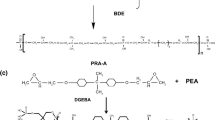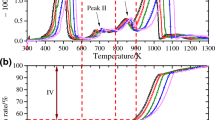Abstract
Artificial leather fire-proof materials have obtained a good market due to stable production quality and low production price. Three kinds of artificial leather materials (polyvinyl chloride artificial leather (PVC), polyurethane artificial leather (PU) and polyurethane/polyvinyl chloride artificial leather (PU/PVC)) have been investigated, and then seven analysis methods were introduced to identify the materials. Thermo-gravimetric analysis indicated the materials had fine thermal stability. Fire-proof testing revealed the artificial leather materials had good flame retardancy, which could improve the applicability of fire-proof building materials. Tearing examination results indicated that there was a clear distinction between PVC and PU. The PU displayed significant differences compared with PVC or PVC/PU through pH indicator to observe the color of the pyrolysis gas aqueous solution. The dissolution tests results showed that cyclohexanone, dichloromethane and dimethylformamide (DMF) were efficient solvents that could be used for identifying PVC, PU and PU/PVC. The ATR-FTIR, a way to provide the high discriminating ability for identifying artificial leathers, indicated that the artificial leathers had different infrared characteristic peaks. In addition, the main compositive materials of the artificial leathers could be inferred by the relative contents analysis of N and Cl in artificial leathers.
Similar content being viewed by others
References
Kumar P., Role of plastics on human health. The Indian Journal of Pediatrics, 2018, 85: 384–389.
Fan H., Yuan J., Artificial/synthetic leather materials and technology. China Light Industry Press, Beijing, 2010. (In Chinese)
Zhang X., Wang W., Yu D., Synthesis of waterborne polyurethane–silver nanoparticle antibacterial coating for synthetic leather. Journal of Coatings Technology and Research, 2018, 15: 415–423.
Gurera D., Bhushan B., Fabrication of bioinspired superliquiphobic synthetic leather with self-cleaning and low adhesion. Colloids and Surfaces A: Physicochemical and Engineering Aspects, 2018, 545: 130–137.
Bolodian I., Melikhov A., Tanklevskiy L., Fire safety arrangement of inhabited pressurized compartments of manned spacecraft. Acta Astronautica, 2017, 135: 92–99.
Zhao Z.Q., He B.J., Li L.G., Wang H.B., Darko A., Profile and concentric zonal analysis of relationships between land use/land cover and land surface temperature: Case study of Shenyang, China. Energy and Buildings, 2017, 155: 282–295.
Hwang S., Ryu H.J., Kim Y., Shim S.E., Thermal stability and mechanical properties of silicone rubber composites filled with inorganic fire-proof fillers and expandable materials. Polymer Korea, 2018, 42 (3): 354–363.
Wang J., Song W.H., Zhang M., Chen Z., Experimental study of the acid corrosion effects on an intumescent coating for steel elements. Industrial & Engineering Chemistry Research, 2014, 53 (28): 11249–11258.
Mou B., He B.J., Zhao D.X., Chau K.W., Numerical simulation of the effects of building dimensional variation on wind pressure distribution. Engineering Applications of Computational Fluid Mechanics, 2017, 11 (1): 293–309.
Liu Z., Wu D., Yu H., Ma W., Gin G., Field measurement and numerical simulation of combined solar heating operation modes for domestic buildings based on the Qinghai-Tibetan plateau case. Energy and Buildings, 2018, 167: 312–321.
Liu Z., Xu W., Zhai X., Qian C., Chen X., Feasibility and performance study of the hybrid ground-source heat pump system for one office building in Chinese heating dominated areas. Renewable Energy, 2018, 101: 1131–1140.
He B., Zhu J., Constructing community gardens? Residents’ attitude and behaviour towards edible landscapes in emerging urban communities of China. Urban Forestry & Urban Greening, 2018, 34: 154–165.
Amutha K., Sustainable chemical management and zero discharges. The Textile Institute Book Series, In Sustainable Fibres and Textiles. 2017, pp. 347–366.
Matheson A.F., Charge R., Corneliussen T., Properties of PVC compounds with improved fire performance for electrical cables. Fire Safety Journal, 1992, 19: 55–72.
Zhang P., Xu P., Fan H., Zhang Z., Chen Y., Phosphorusnitrogen flame retardant waterborne polyurethane/ graphene nanocomposite for leather retanning. Journal of the American Leather Chemists Association, 2018, 113: 142–150.
Kronenburg R., 1-Introduction: The development of fabric structures in architecture. Woodhead Publishing Series in Textiles, In Fabric Structures in Architecture, 2015, pp. 1–21.
Putintsev N.M., Putintsev D.N., Heat capacity and thermal expansion of water and helium. Journal of Thermal Science, 2017, 26 (2): 125–131.
Hole L.G., Whittaker R.E., Structure and properties of natural and artificial leathers. Journal of Material Science, 1971, 6: 1–15.
Starnes Jr W.H., Structural and mechanistic aspects of the thermal degradation of poly (vinylchloride). Progress in Polymer Science, 2002, 27: 2133–2170.
Braun D., Recycling of PVC. Progress in Polymer Science, 2002, 27: 2171–2195.
Yoshitake N., Furukawa M., Thermal degradation mechanism of α, β-diphenyl alkyl allophanate as a model polyurethane by pyrolysis-high-resolution gas chromatography/FT-IR. Journal of Analytical and Applied Pyrolysis, 1995, 33: 269–281.
Font R., Fullana A., Caballero J.A., Candela J., Garcia A., Pyrolysis study of polyurethane. Journal of Analytical and Applied Pyrolysis, 2001, 58–59: 63–77.
Wang Y., Jin L., Preparation and characterization of self-colored waterborne polyurethane and its application in eco-friendly manufacturing of microfiber synthetic leather base. Polymers, 2018, 10(3), 289. DOI: 10.3390/polym10030289
Sano T., Suzuki S., Basic forensic identification of artificial leather for hit–and–run cases. Forensic Science International, 2009, 192: 27–32.
Siroka B., Siroky J., Bechtold T., Application of ATR-FT-IR single-fiber analysis for the identification of a foreign polymer in textile matrix. International Journal of Polymer Analysis and Characterization, 2011, 16: 259–268.
Jiang P., Fang H., Wei L., Current situation and development trend of plasticizer for PVC. Polyvinyl Chloride, 2003, 2: 1–5.
Zhan J., liu W., Wu F., Li Z., Wang C., Life cycle energy consumption and greenhouse gas emissions of urban residential buildings in Guangzhou city. Journal of Cleaner Production, 2018, 194: 318–326.
Gradziel S., Witkowski K., Influence of biomass co-combustion on heating surfaces thermal efficiency. Journal of Thermal Science, 2018, 27 (5): 427–432.
Kaygusuz M., Meyer M., Junghans F., Aslan A., Modification of leather surface with atmospheric pressure plasma and nanofinishing. Polymer-Plastics Technology and Engineering, 2018, 57: 260–268.
Acknowledgements
The authors thank “the prohibiting fake commodities and infringers: identification of artificial leather and natural leather (2011QK039)” for financial support.
Author information
Authors and Affiliations
Corresponding author
Rights and permissions
About this article
Cite this article
Ma, Y., Dang, X. & Shan, Z. Thermal Analysis and Identification of Potential Fire-proof Energy Building Material Based on Artificial Leather. J. Therm. Sci. 28, 88–96 (2019). https://doi.org/10.1007/s11630-018-1054-8
Received:
Published:
Issue Date:
DOI: https://doi.org/10.1007/s11630-018-1054-8




